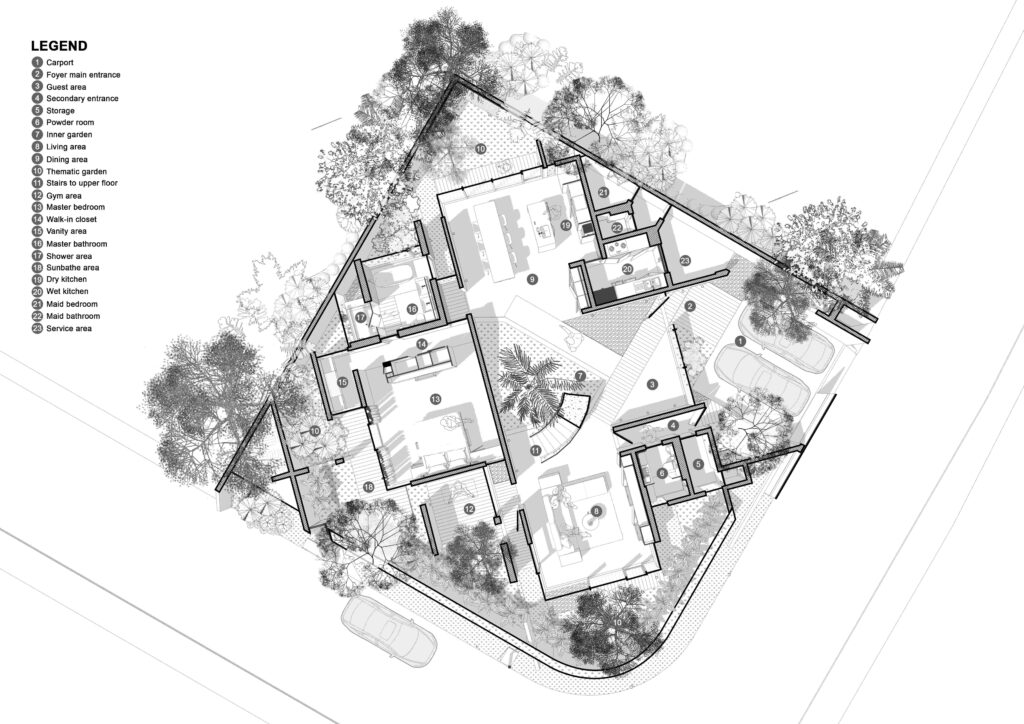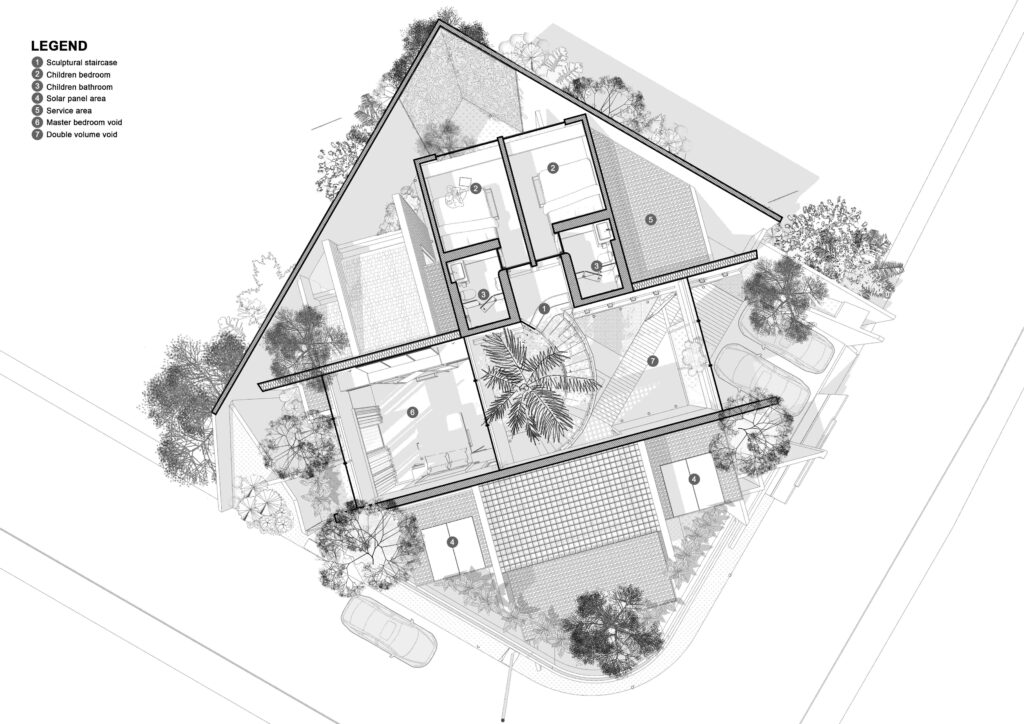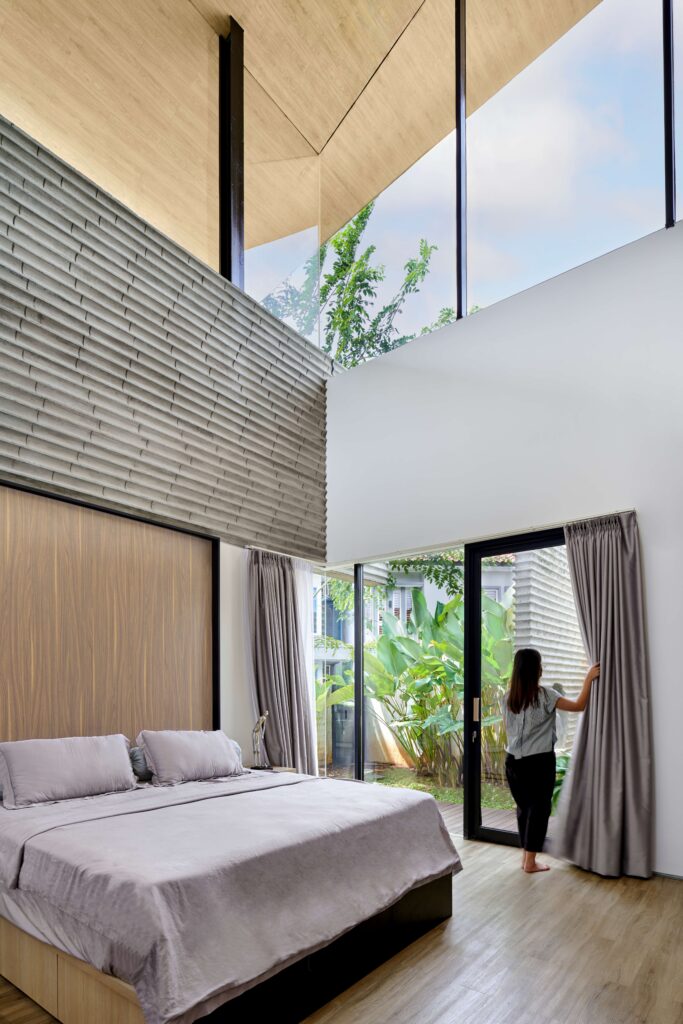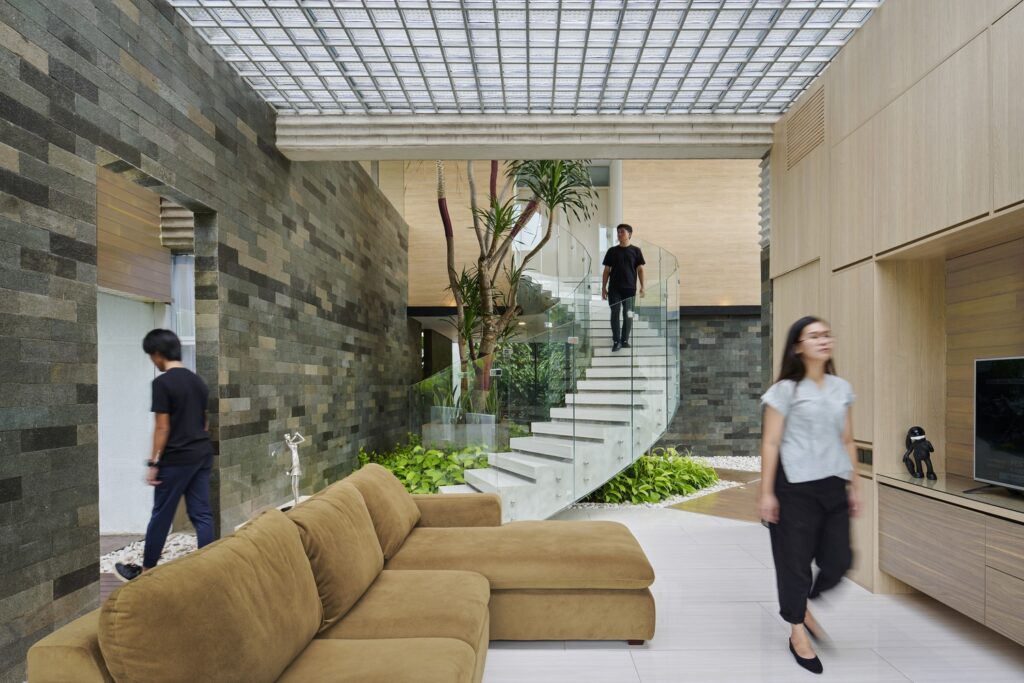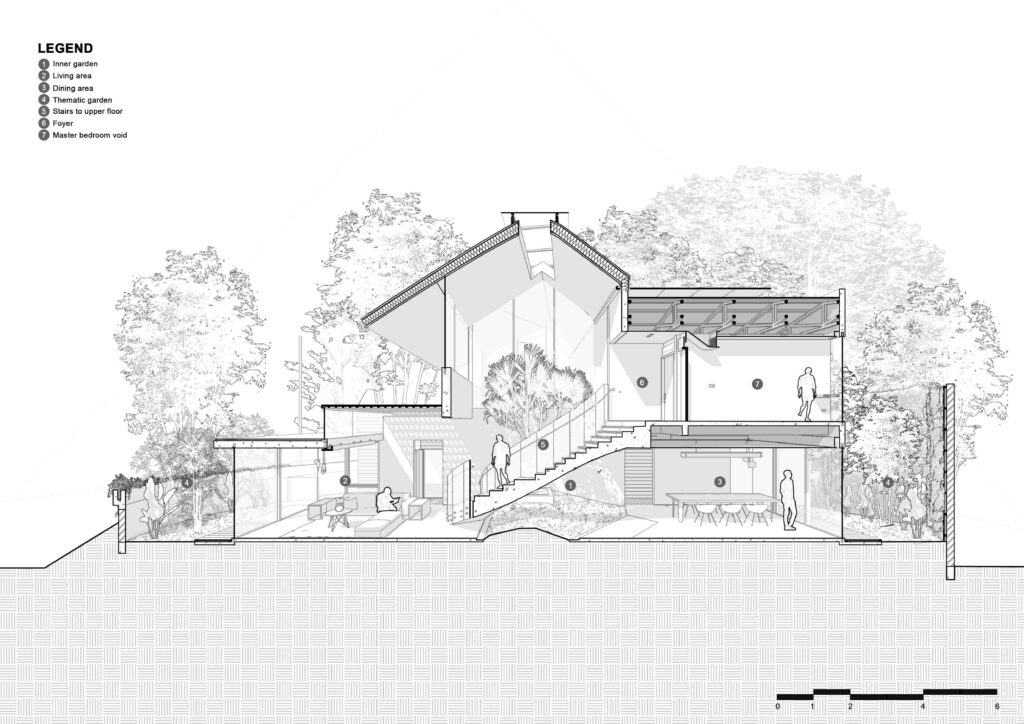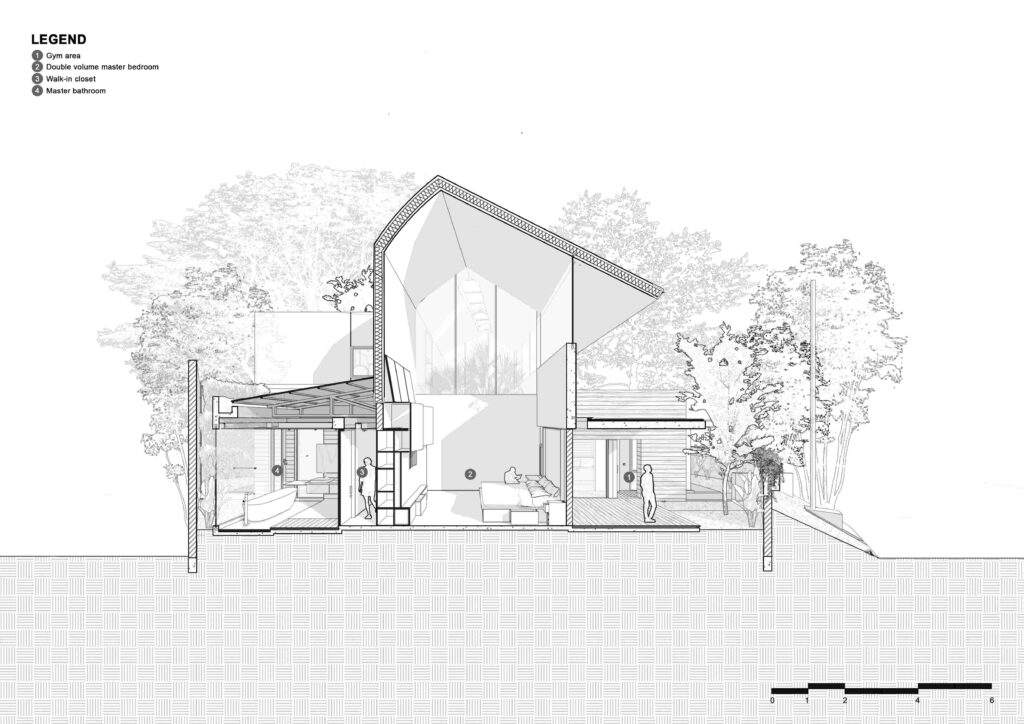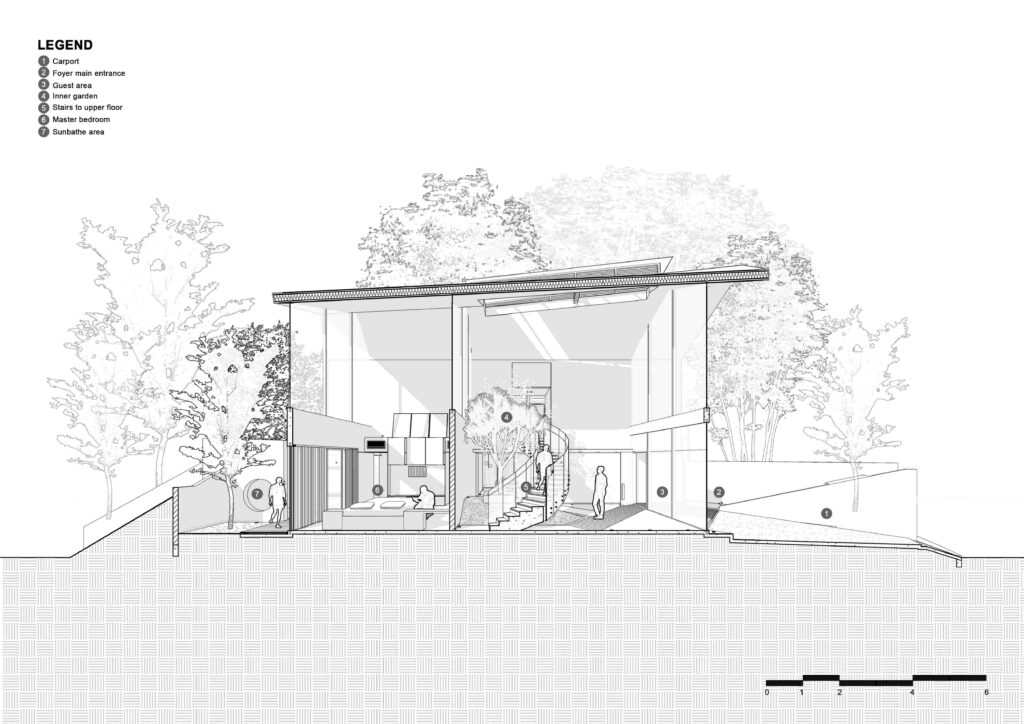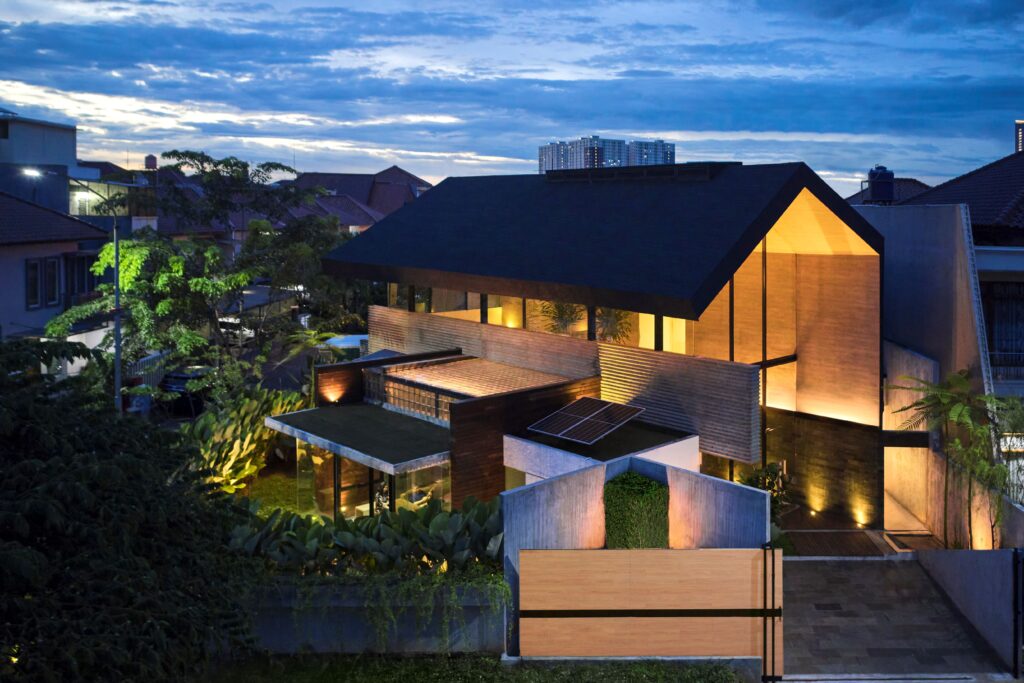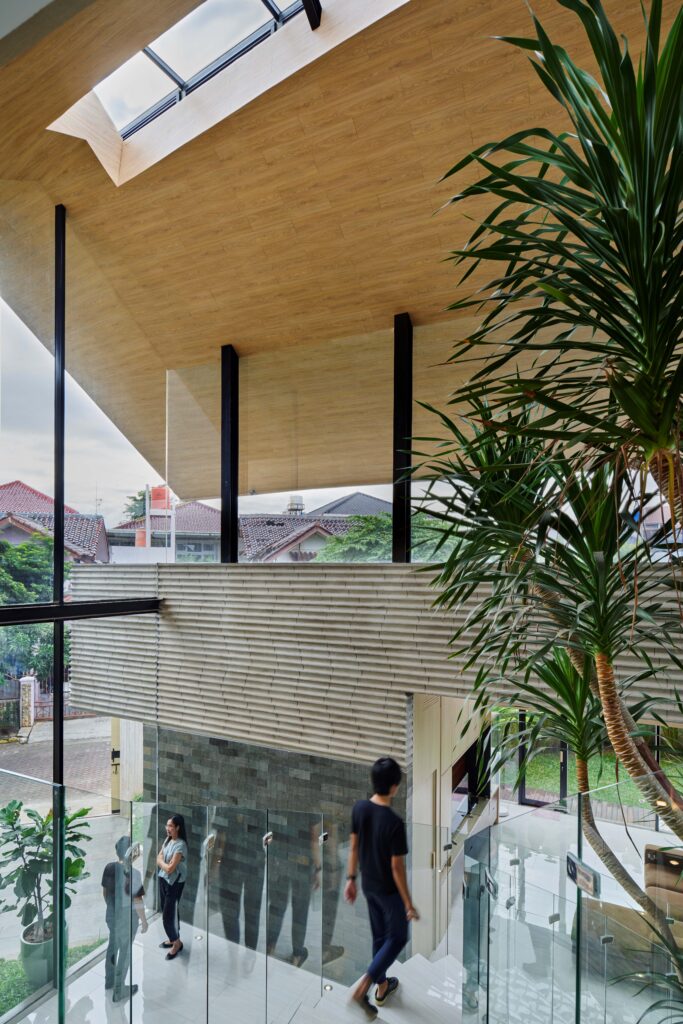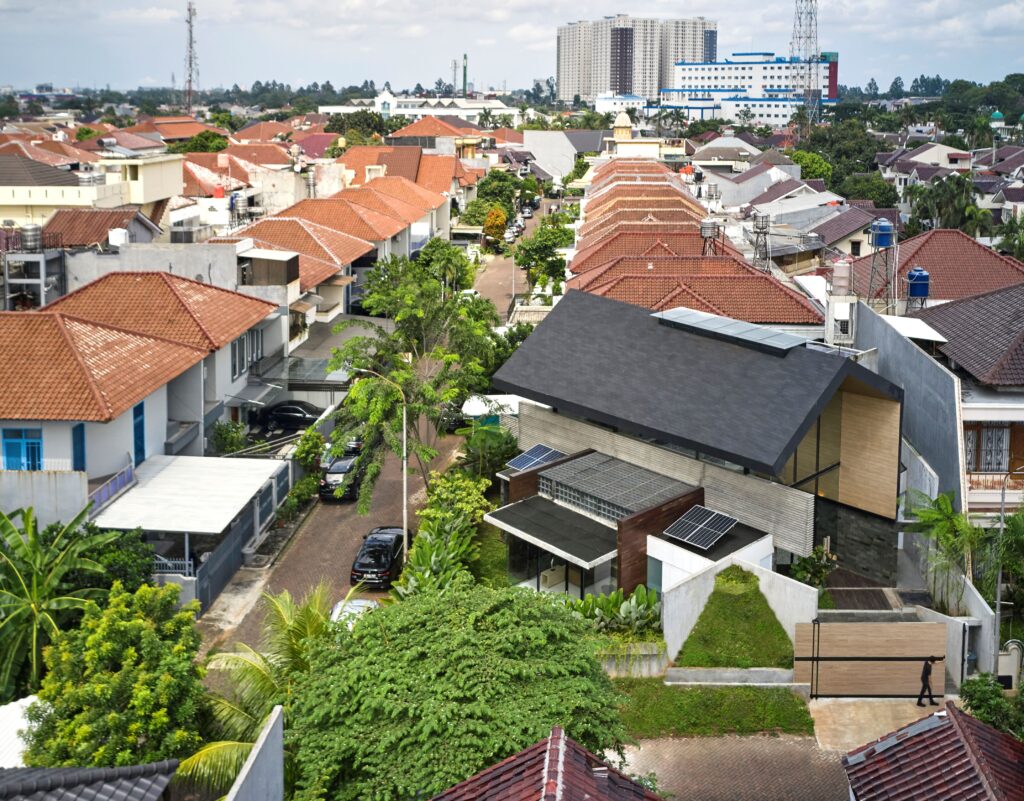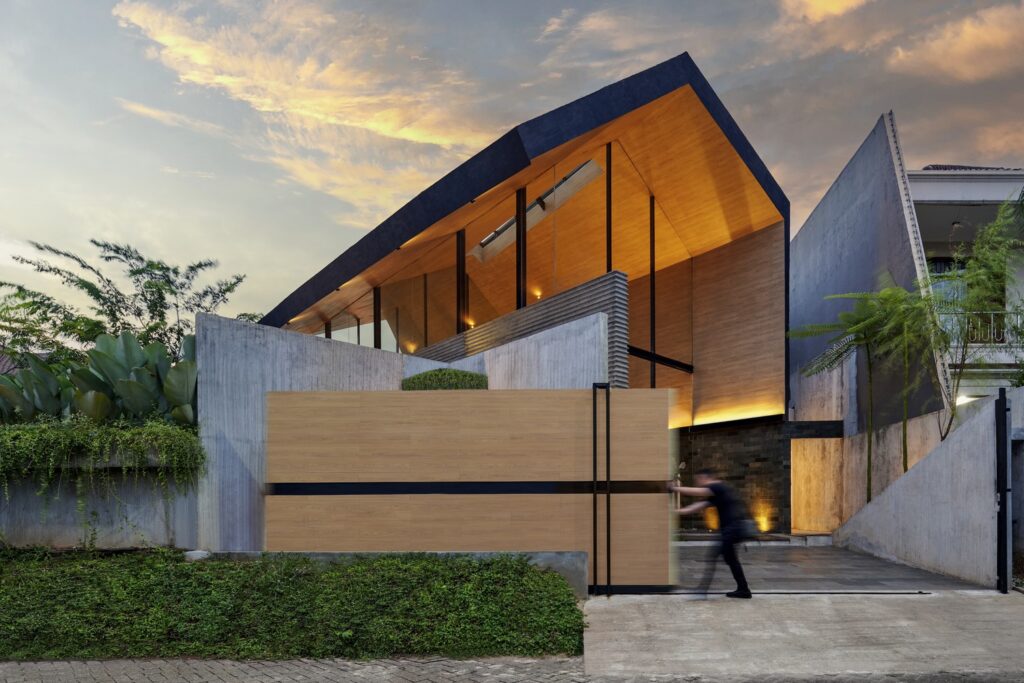
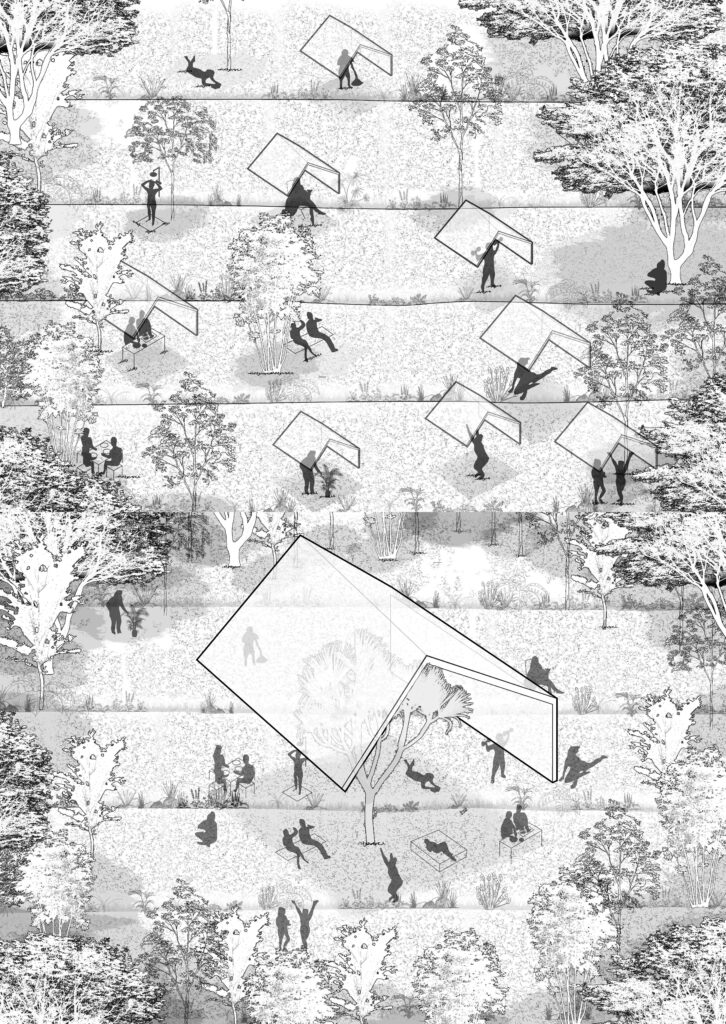
Bernaung means the act of sheltering, the very DNA that was imprinted within tropical belt inhabitants, long before we embraced the concept of a house. The name emphasizes how easy it was to live in the tropics, and that reaching sustainability is nothing but achieving comfort with the least energy required. The design was to rearrange all the user’s activity during the day and cycle it into a loop within a giant roof hovering above it. The atrium as the center of the houses acted both as a visual direction and wind chimney to ensure a cross and stacked effect for natural ventilation.
Stretched diagonally across the site, the design was intended to visually connect the garden elongated on all sides and to be able to see skies in both endings of the building. The design is to frame surrounding greeneries from within and create the illusion of more spacious garden houses within the busy urban context of Tangerang. The internal ceiling of the roof was clad with monochrome timber that acted as an open canvas for natural shadow play during the day, and to frame the lighting element within internal spaces as a façade for the nighttime.
The building was rotated to achieve total north-south orientation to optimize natural light while minimizing heat exposure entering the building, roof’s centre point-which was subtracted for skylight and ventilation to release hot air- was also twisted, moving direct heat from north-west penetrating vertically to the atrium. An experiment on a wide-span structure for a single-story house with a mezzanine was chosen to demonstrate the importance of creating a micro-climate within as little as 400 sqm site packed in dense repetitive surrounding developer houses.
Filled with layers of diagonal walls and sandwiched within micro gardens, the design was to optimize the rounded passive design – playing with different air openings and levels of air pressure, and light play in the different hours of the day- which are the strength of living in tropics to achieve comfort with the least energy as a hope for RAD+ar to promote more low energy residential prototype in Southeast Asia.
